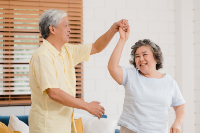
Several types of glycosaminoglycans or GAGs play important roles in the vitality of the joints. Though produced by the cells in the body, aging and injury deteriorate the viscosity of these compounds within the joint and contribute to OA. Because GAGs are vital to healthy joints, we often need to look to supplements or treatments that can boost the lubrication of the joint. The GAGs involved in joint health include:
Glucosamine Sulfate (GS) & Chondroitin Sulfate (CS) act as building blocks to stabilize and protect joints against deterioration. Additionally, GS improves the lubricant properties of synovial fluid.
MSM (Methylsulfonylmethane) helps reduce inflammation and inhibits the breakdown of cartilage. Some studies show MSM helps decrease pain, stiffness and swelling of the joints.
Hyaluronic Acid (HA) lubricates synovial joints, acting as a shock absorber, and facilitates wound healing. In OA, the hyaluronic acid within the affected joint has deteriorated. HA may be used in an injection with other medical compounds.
Treatment of OA with Glycosaminoglycans
Oral OA supplements (tablet, capsule) usually combine glucosamine sulfate, chondroitin (which comes from shark cartilage), with MSM for better absorption. This type of supplement can help decrease pain and slow down further tissue damage within the joint. The appropriate dose will vary based on a person’s age, degree of joint deterioration and inflammation, and pain level. Similarly, the success of treatment can vary based on severity of OA and lifestyle factors (body weight, smoking status, diet, etc.) Also, GS can be administered by injection into the joint (intra-articular injection). Note: Glucosamine HCL is very different from GS and should not be used for OA.
Hyaluronic acid supplementation is typically administered by intra-articular injection. The success of treatment is dependent upon the factors mentioned for glucosamine and chondroitin, above. Some studies show HA injections work better in younger people than in older adults or those with severe OA.
If you have OA and want to explore these natural approaches to reducing pain and inflammation, consult with a natural medicine physician who can assess your joints, overall health, and determine the best way to support your joints, naturally.
